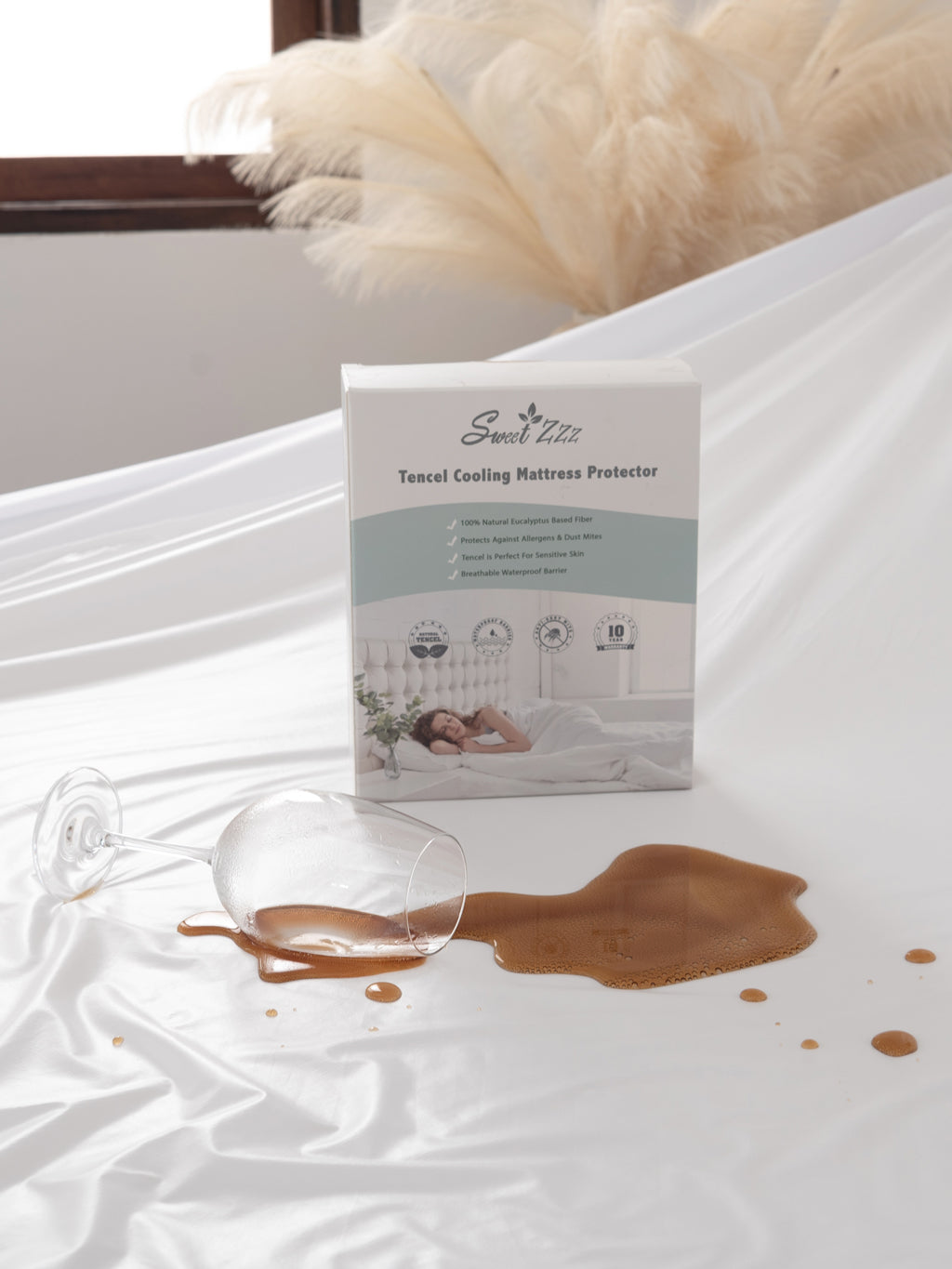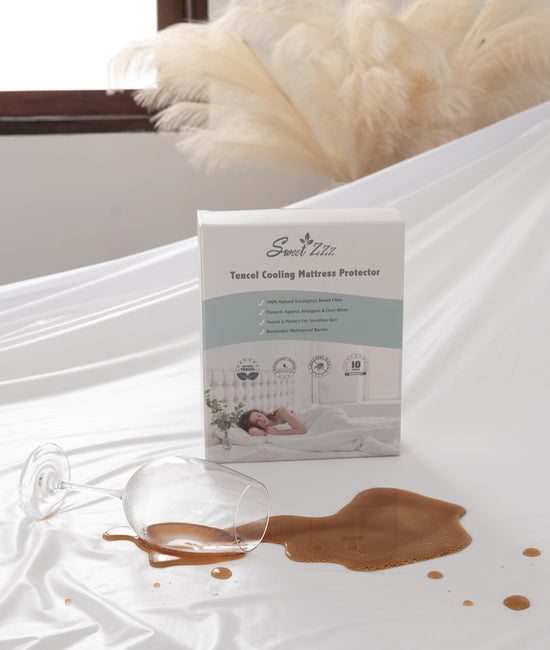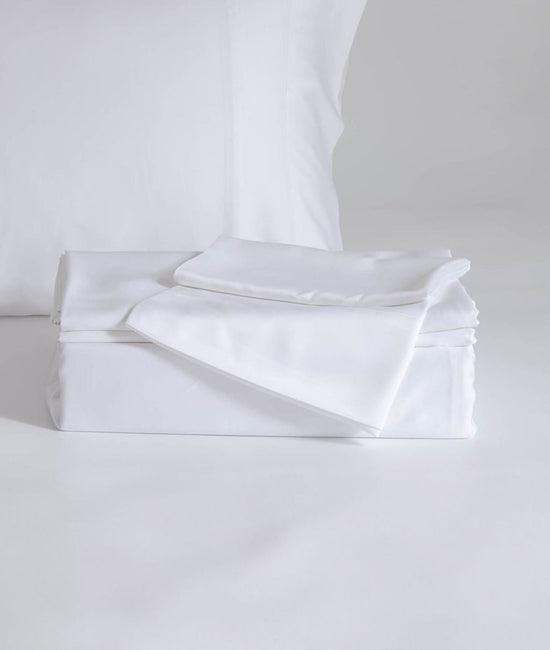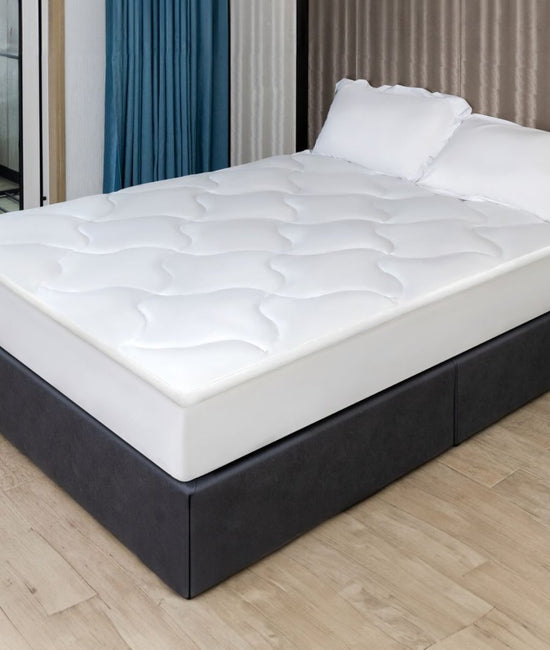How to Wash a Mattress Protector Correctly

How to Wash a Mattress Protector Correctly
A mattress protector is an essential bedding accessory that prolongs the life of your mattress by keeping it clean, fresh, and free from allergens. However, just like any other bedding item, it requires regular cleaning to maintain its effectiveness. In this article, we'll discuss the proper way to wash a mattress protector, ensuring you maintain its functionality and prolong its life.
Step-by-Step Guide to Washing a Mattress Protector:
1- Read the care label: Before attempting to wash your mattress protector, always read the care label. Different materials may require different care instructions. Following the manufacturer's guidelines will ensure that you don't damage your mattress protector during the cleaning process.
2- Remove the mattress protector: Carefully remove the mattress protector from your bed, taking care not to spill any trapped debris or liquids onto the mattress or bedding.
3- Pretreat stains: If there are any visible stains on the mattress protector, pretreat them with a stain remover or a mixture of water and mild detergent. Gently rub the solution into the stain with a soft brush or cloth, and let it sit for at least 15 minutes before washing.
4- Load the washing machine: Place the mattress protector in your washing machine. It's best to wash it separately or with other lightweight items such as pillowcases or sheets to prevent damage from heavier items. Avoid overloading the washing machine, as this can cause the mattress protector to become tangled or stretched.
5- Choose the right settings: Select a gentle or delicate cycle on your washing machine, and use cold or lukewarm water to prevent shrinking or damage to the mattress protector's materials. Use a mild detergent that is free of bleach, as harsh chemicals can deteriorate the fabric and waterproof layer over time.
6- Wash the mattress protector: Start the washing machine and let it run through the entire cycle. Check the mattress protector for any remaining stains or dirt once the cycle is complete. If necessary, repeat the washing process.
7- Dry the mattress protector: The best way to dry a mattress protector is to air dry it, as this prevents shrinking and damage to the fabric. Hang it on a clothesline or drying rack, making sure it is fully extended and not folded or crumpled. If you must use a dryer, use the lowest heat setting and remove the mattress protector while it's still slightly damp to prevent over-drying.
8- Inspect and store: Once the mattress protector is completely dry, inspect it for any signs of damage, such as fraying or tears. If it's in good condition, fold it neatly and store it in a cool, dry place until you're ready to use it again.
Notes To Consider:
- Always follow the care instructions on the label of your mattress protector. These guidelines are specifically tailored to the materials and construction of your particular product.
- Avoid using fabric softeners when washing a mattress protector, as they can leave a residue that reduces the effectiveness of the waterproof layer.
- Wash your mattress protector every two to three months, or more frequently if you suffer from allergies or have had any spills or accidents on your bed.
- Remember that a clean mattress protector not only protects your mattress but also promotes a healthy sleep environment, ensuring a comfortable and restful night's sleep.







